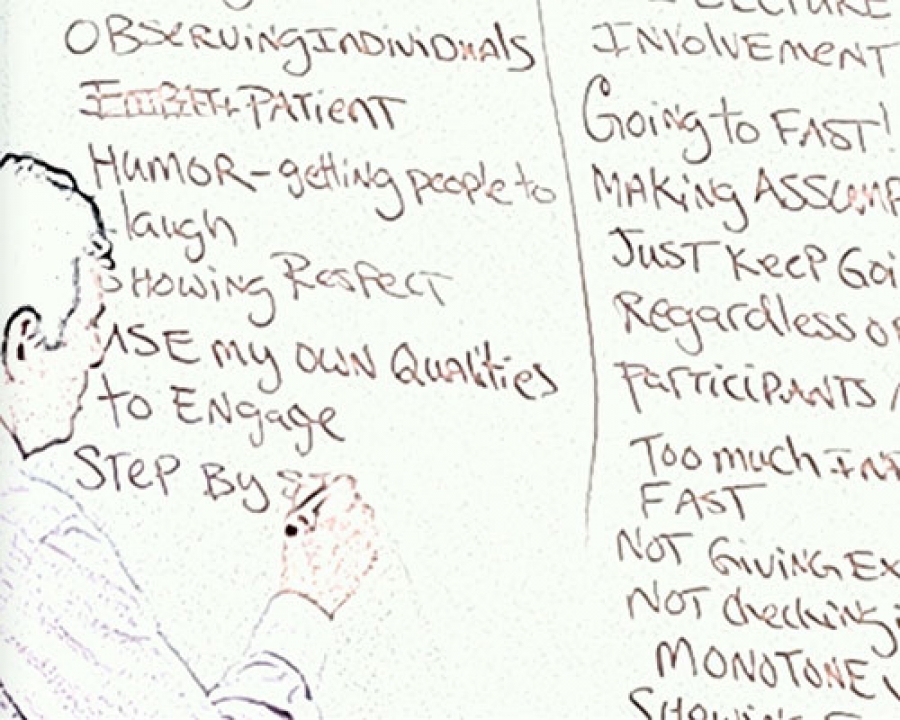There are, however, a few key ingredients that will help you build a strong base to begin your facilitation journeys—and these ingredients will help you wherever you facilitate: your living room, the classroom, or the boardroom.
Define Facilitation
First, it is essential to establish a definition for facilitation. Facilitation comes from the Latin word "facilis," which means "the act of making something easier." Our primary job as facilitators is to create an environment of trust and connectedness that empowers our participants to activate their talents, deepen their awareness, reflect and make positive changes moving forward.
Set Expectations
It is essential for both facilitators and participants to set clear expectations for your sessions. Ask your participants what they would like to walk away with by the end of the workshop. The expectations must not only be stated clearly, but also clearly understood by everyone in the room.
Meet Participants Where They Are
We bring our agenda: all prepared and ready to implement. We have set up our room and our materials in order to effectively put our lesson into action. But it's easy to forget to meet your participants where they are. Do this by greeting them positively as they enter your space, checking in with them, getting their voices in the room early on and allowing them to be where they truly are—especially when they aren't where you want them to be.
Listen More, Talk Less
If you start to hear too much of your own voice, it's time to check in with your participants. Think about a question that will help you understand more about who's in the room and what they are grasping or not grasping from what you are facilitating. Strive to continually assess where both individuals and the whole group are, and balance that with what still needs to be accomplished.
Finish Strong
We know that there will be some kind of unexpected circumstance that will arise that either interrupts, cuts short, extends or sabotages your session. No matter what happens, make sure to finish what you have started in as an effective way as possible. The way I do this is by committing to get some kind of "evidence of learning" from my participants.
Written by Greg Shamie, Director of Staff Development at The Leadership Program.




